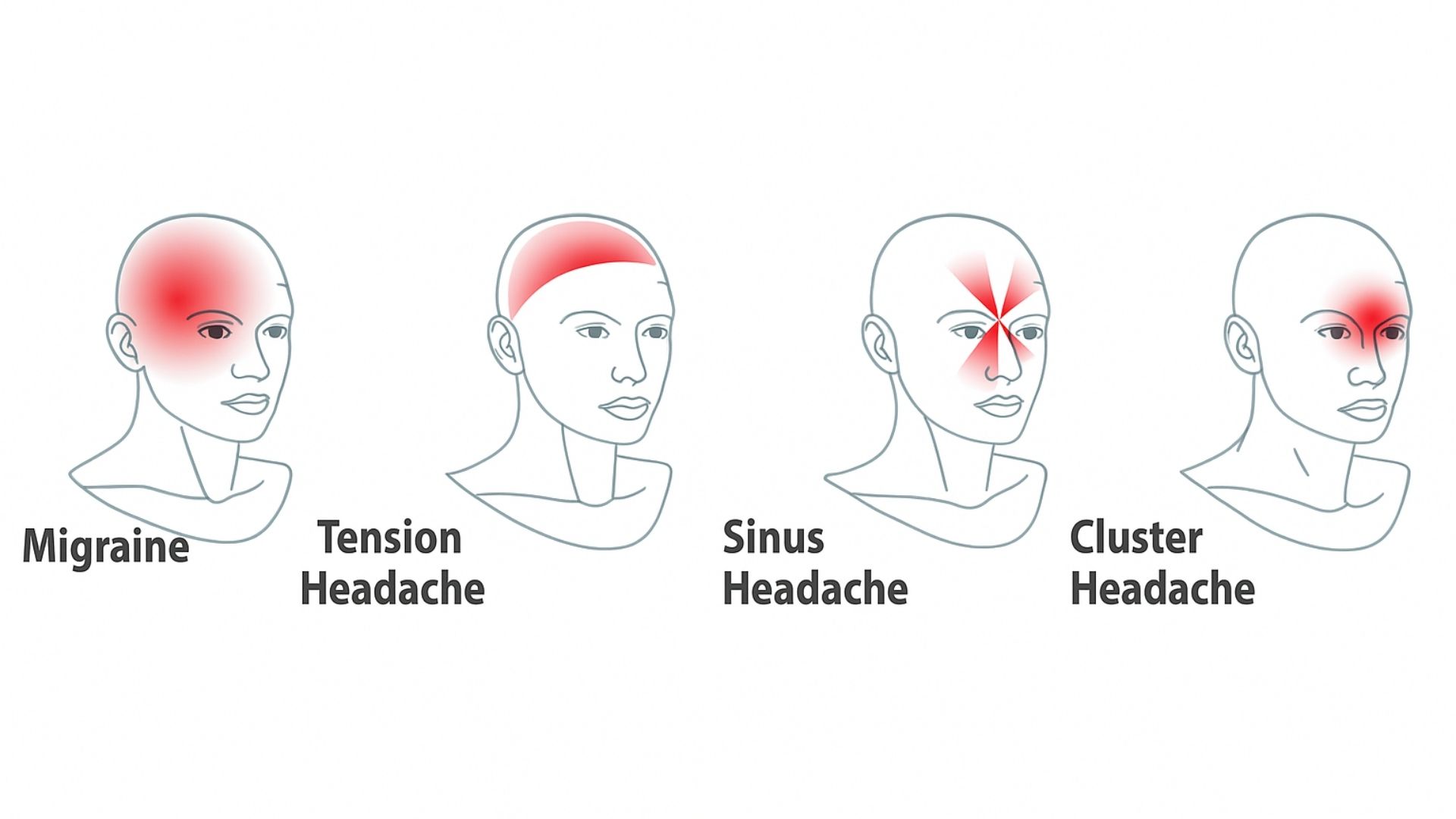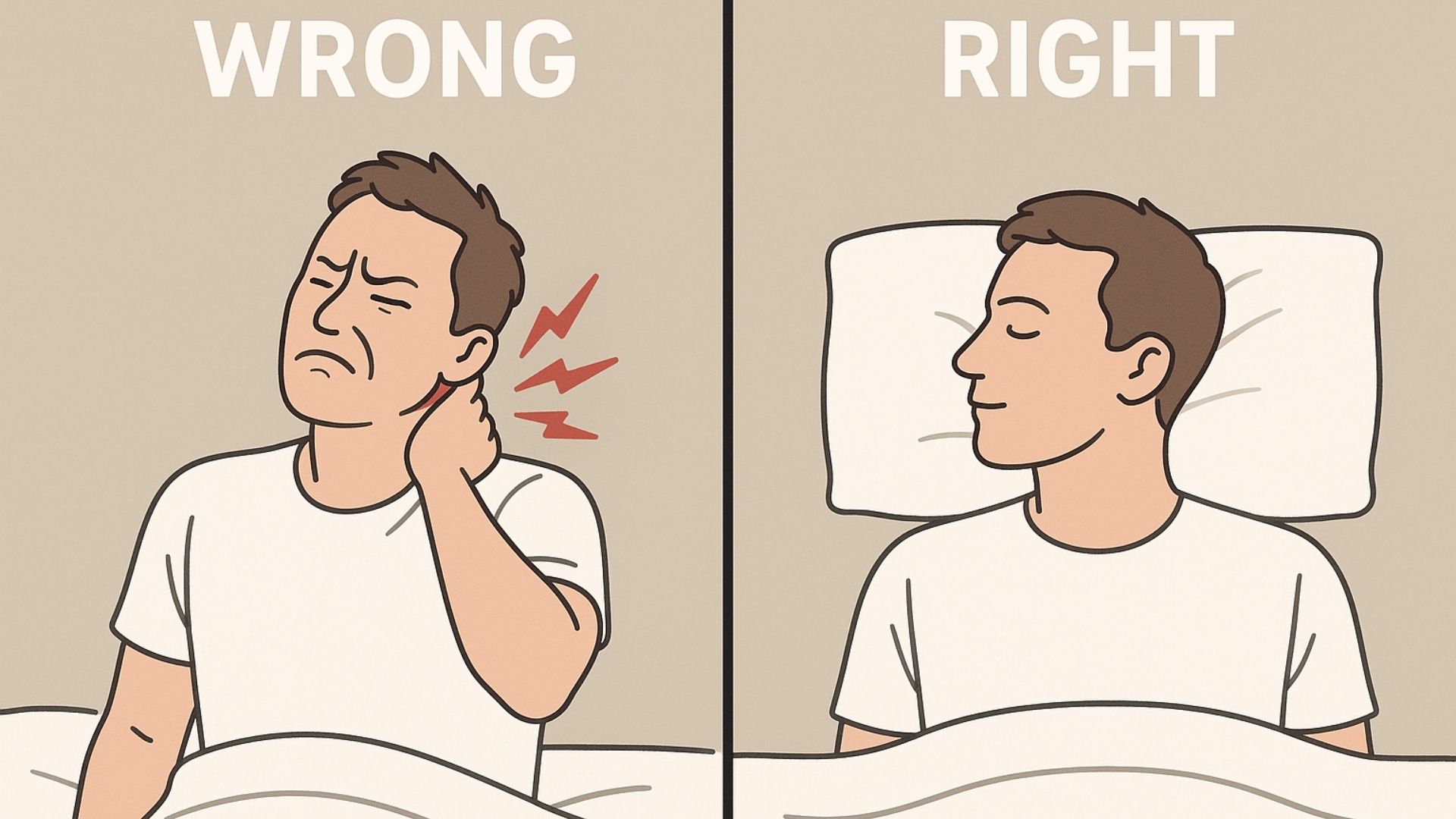Your comfort pillow might be the very cause behind your infuriating neck and back pain.
Poor pillow support can misalign your neck and spine. This leads to strain, frequent headaches, and fatigue—even after a full night’s sleep.
A shocking discovery by Japanese pain specialist Hiroshi Tanaka has revealed that ordinary pillow usage can be torturous to your body. It is affecting crucial blood supply to your muscles and dramatically increasing the chances of strong migraines.
Over time, this can translate to chronic pain and costly treatments. Let’s understand what research says about pillow usage and how you can align your pillow support with your sleeping position.

This visual guide highlights the specific areas affected by migraine, tension, sinus, and cluster headaches—helping you identify and understand your symptoms better.
How Does Using A Pillow Affect Your Neck And Spine?
Using a pillow directly impacts the alignment of your neck and spine. The right pillow supports the natural curve of your cervical spine, keeping your head, neck, and shoulders in a neutral position.
But if your pillow is too high or too low, your neck bends unnaturally, and your trapezius muscle, the connector between your neck and shoulders, is strained.
It’s like twisting your neck for straight 8 hours, and according to research, it is just the beginning of the damage. In the long term, this night muscle tension can cause a devastating chain reaction of muscle pain throughout the upper body.
The Pain Cascade Effect: Findings From Dr. Tanaka’s Study
Dr Hiroshi Tanaka led this 25-year investigative study at the Tokyo Spine Institute using muscle monitoring and blood flow imaging technology.
The findings revealed that when you use a pillow, your neck muscles get locked, and then tension starts spreading through your shoulders, reaching your upper back.
In the specialized blood flow imaging, they found that this constant muscle tension chokes the vital blood supply to crucial muscles, creating a vicious cascading effect.
This happens every night, and using a regular pillow every day resets this cycle, adding to the pain. If you want to ensure you are sleeping in a safe position, it is important to implement the right pillow support.
How To Align Your Pillow With Your Sleep Position
Incorrect pillow alignment or sleeping posture can lead to muscle strain and inflammation in the neck, as shown in this visual representation.

Using the wrong pillow can lead to neck stiffness and pain, while the right one supports your spine and ensures restful, pain-free sleep.
Sleeping on your back with a thin pillow is considered the ideal position for spinal alignment. But not every pillow will support different sleeping styles. Here’s how you can ensure your pillow support is healthy for your body.
1. Side Sleeping Position
When you sleep on your side, the gap between your neck and shoulder increases, which can cause neck strain and back pain. To maintain adequate support and align your spine and neck, you can place a thick pillow under your neck and place one more pillow between your legs. This will adequately support your neck and keep your spine in a neutral position.
2. Stomach Sleeping Position
Sleeping on your stomach is the most stressful position for your muscles and should always be avoided. But if you sleep in this position, use a flat pillow to rest your head directly on the mattress. You can also use one more pillow under your abdomen or pelvis to keep your lower back in its natural alignment.
Fix Neck and Back Pain: Home Remedies To Try Today
If you are dealing with persistent neck pain, these simple and natural remedies can provide relief and support immediately.
1. Hot and Cold Pack Therapy
To perform a hot and cold pack therapy, apply a cold pack or warm compress on the strained area of your neck alternatively for every 15-20 minutes. This therapy is proven effective in relaxing tight muscles and improving blood circulation in the affected area.
2. Gentle Stretches and Exercises
Make a habit of doing gentle movements like neck tilts or shoulder rolls throughout the day. Doing this regularly will reduce muscle stiffness and release tension. You can also try the cat cow yoga pose and the child pose to make your spine more flexible and improve your posture.
3. Exercise, Acupuncture and Massage
You can also try out acupuncture and massage therapy to ease chronic neck and back discomfort. Target pressure points like the base of the skull, shoulders, and upper back to release blocked tension and promote relaxation. You can also try self-massage or seek a professional therapist.
If your neck pain feels really strong and has been troubling you for days, you can try out this treatment exercise recommended by spiritual master Saint Dr MSG Insan.
Saint Dr MSG Insan has coached national and international players with exercise tips for over 3 decades.
This treatment requires minimal time and effort and can ease your back and neck pain in just 7-15 days, saving you from problems like cervical problems beforehand.
To do this exercise, lie down on a cot or a bench and slowly move your body backwards with the help of your legs. Then gently lower your body from the bed until your chest.
Slowly take both of your hands backward and start loosening your neck gently. Stay in this position from 15 seconds to 1 minute.
Repeat this practice 3-7 times and do it throughout morning, afternoon, and evening. Within two weeks, you will be able to ease your neck strain along with backache.
Choose The Right Pillow And Combine it With Healthy Routines
Prevention is always better than a cure. While your pillow might have the power to silently destroy your neck muscles, you can make conscious choices and practice healthy exercises to prevent this strain.
If your neck pain has worsened lately, it’s best to consult a professional to prevent any serious damage. But if your neck pain comes and goes, it is highly likely, your pillow is the culprit.
Try out the remedies we shared and align your pillow support with your sleep position. Remember as humans we spend one third of our lives sleeping; one wrong move or bad routine can lead to disastrous health issues in the long run.
Don’t let your pillow silently sabotage your health. It’s time to rethink your sleep setup. Consult a physiotherapist, choose a pillow that supports your neck’s natural curve, and prioritize restful, pain-free sleep.
✅ Liked this insight? Share it with friends and help spread awareness!

